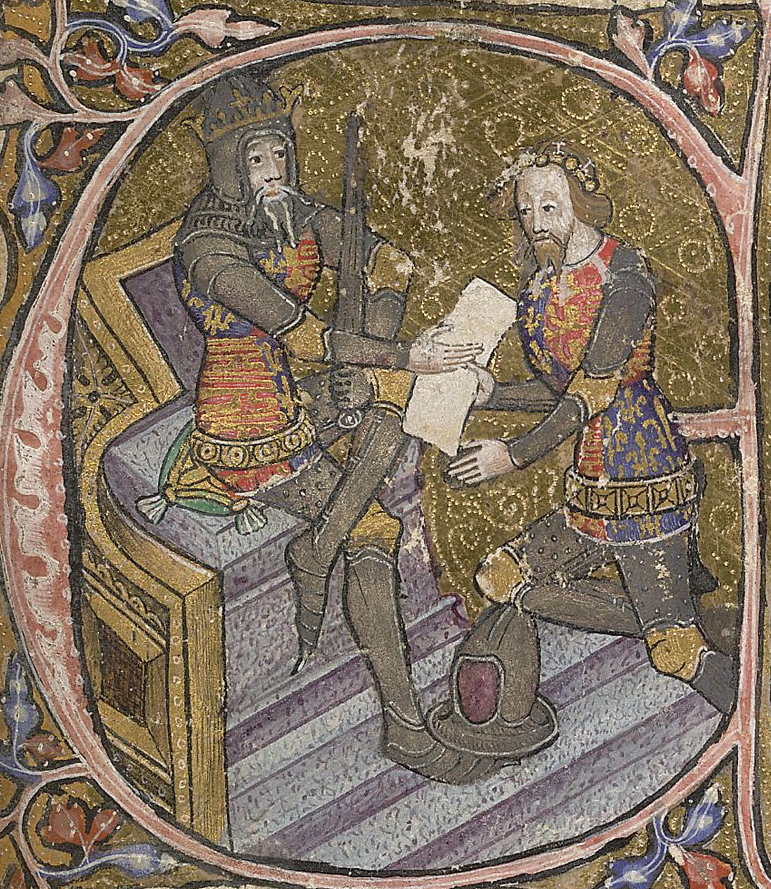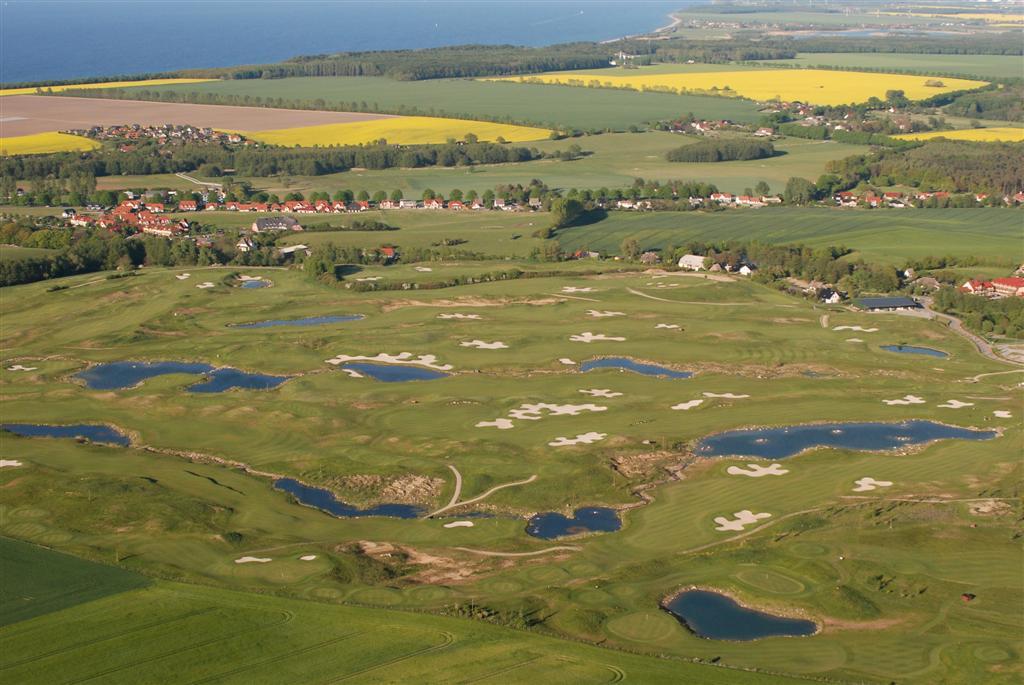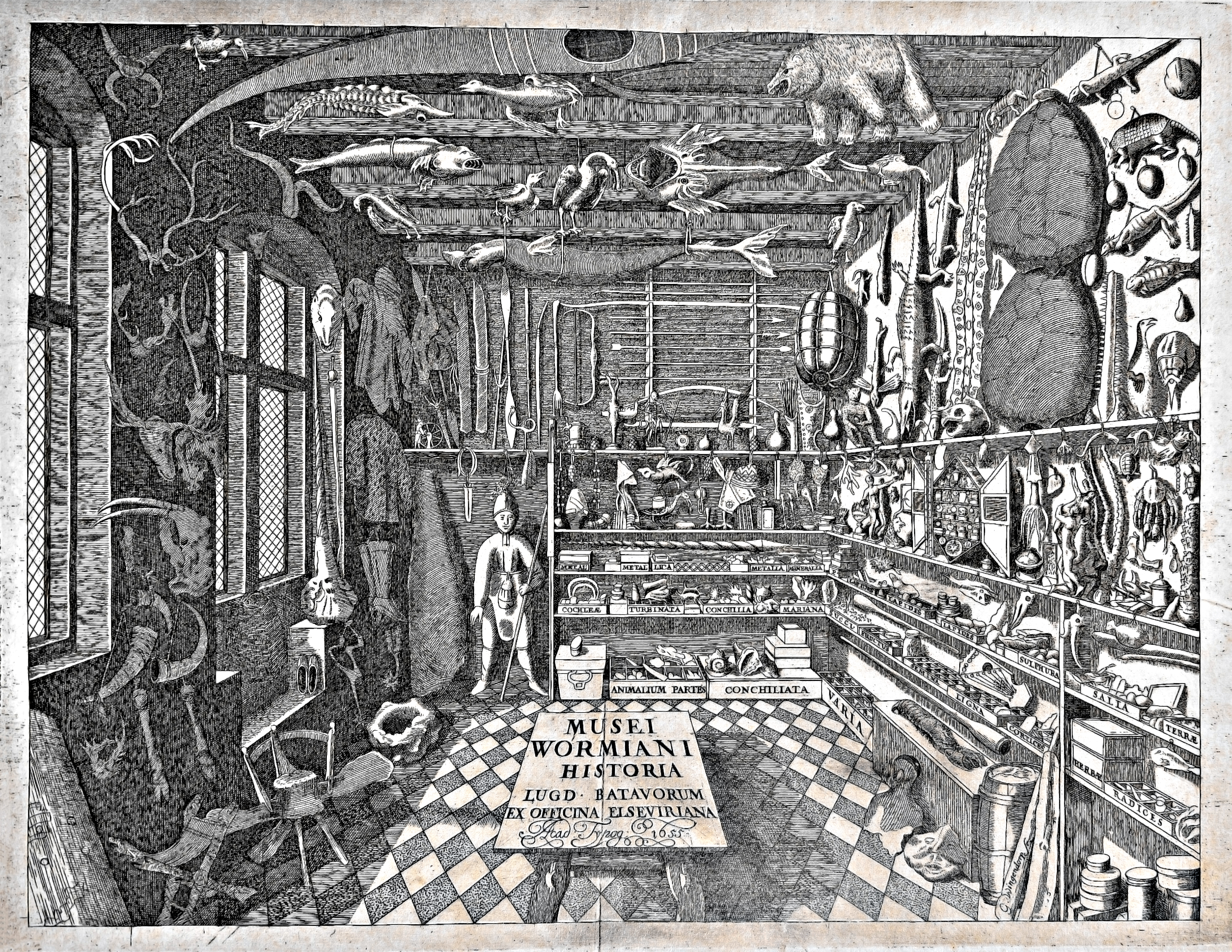|
Donnington, Berkshire
Donnington is an English suburban village in the civil parish of Shaw-cum-Donnington, just north of the town of Newbury, Berkshire. It contains a ruined medieval castle and a Strawberry Hill Gothic mansion. Notable buildings Castle Donnington Castle, a ruined medieval castle of some historical significance, was the home of Richard Abberbury the Elder. The second Battle of Newbury (27 October 1644) was fought between Newbury and Donnington as an attack on the castle, which was held for the Royalists by Sir John Boys. The main entrance range of Donnington Castle House was built in 1648 to incorporate an earlier lodge. Hospital almshouses Donnington Hospital almshouses, founded in 1393, form the oldest charity in the county, although others formed later had older charities merged into them. Robert Beaugraunt is recorded as minister of the poor in 1412. The earliest current building dates from 1602, but the complex is wide-ranging, with additional modern almshouses having b ... [...More Info...] [...Related Items...] OR: [Wikipedia] [Google] [Baidu] |
Donnington Castle
Donnington Castle is a ruined medieval castle, situated in the small village of Donnington, just north of the town of Newbury in the English county of Berkshire. It was founded by Sir Richard Abberbury the Elder in 1386 and was bought by Thomas Chaucer before the castle was taken under royal control during the Tudor period. During the First English Civil War the castle was held by the royalist Sir John Boys and withstood an 18-month siege; after the garrison eventually surrendered, Parliament voted to demolish Donnington Castle in 1646. Only the gatehouse survives. The site is a scheduled monument under the care of English Heritage. History The manor of Donnington had been owned by the Adderbury family since 1292, Donnington Castle was built by its original owner, Sir Richard Abberbury the Elder, under a licence granted by Richard II in 1386. The surviving castle gatehouse dates from this time. In 1398, the castle was sold to Thomas Chaucer, son of the poet Geoffrey Cha ... [...More Info...] [...Related Items...] OR: [Wikipedia] [Google] [Baidu] |
Donnington Hospital
Donnington Hospital is a series of almshouses at Donnington in the English county of Berkshire, run by the Donnington Hospital Trust. It was established in 1393 by Sir Richard Abberbury the Elder. The original site on the Oxford Road is now occupied by almshouses built in 1602. A further complex was added at Abberbury Close in 1938, followed by Groombridge Place in 1993. The Trust also has almshouses in Bucklebury and Bray in Berkshire and Iffley Iffley is a village in a designated Conservation Area in Oxfordshire, England. It lies within the boundaries of the city of Oxford, between Cowley and the estates of Rose Hill and Donnington, and in proximity to the River Thames (Isis). A nota ... in Oxfordshire. References 1393 establishments in England Almshouses in Berkshire Buildings and structures in Berkshire Charities based in Berkshire West Berkshire District Grade II* listed buildings in Berkshire {{charity-org-stub ... [...More Info...] [...Related Items...] OR: [Wikipedia] [Google] [Baidu] |
Richard II Of England
Richard II (6 January 1367 – ), also known as Richard of Bordeaux, was King of England from 1377 until he was deposed in 1399. He was the son of Edward the Black Prince, Prince of Wales, and Joan, Countess of Kent. Richard's father died in 1376, leaving Richard as heir apparent to his grandfather, King Edward III; upon the latter's death, the 10-year-old Richard succeeded to the throne. During Richard's first years as king, government was in the hands of a series of regency councils, influenced by Richard's uncles John of Gaunt and Thomas of Woodstock. England then faced various problems, most notably the Hundred Years' War. A major challenge of the reign was the Peasants' Revolt in 1381, and the young king played a central part in the successful suppression of this crisis. Less warlike than either his father or grandfather, he sought to bring an end to the Hundred Years' War. A firm believer in the royal prerogative, Richard restrained the power of the aristocracy and r ... [...More Info...] [...Related Items...] OR: [Wikipedia] [Google] [Baidu] |
Anne Of Bohemia
Anne of Bohemia (11 May 1366 – 7 June 1394), also known as Anne of Luxembourg, was Queen of England as the first wife of King Richard II. A member of the House of Luxembourg, she was the eldest daughter of Charles IV, Holy Roman Emperor and King of Bohemia, and Elizabeth of Pomerania. Her death at the age of 28 was believed to have been caused by plague. Early life Anne had four brothers, including the Holy Roman Emperor Sigismund, and one younger sister, Margaret of Bohemia, Burgravine of Nuremberg. She also had five half-siblings from her father's previous marriages, including Margaret of Bohemia, Queen of Hungary. She was brought up mainly at Prague Castle, and spent much of her early life in the care of her brother, King Wenceslaus IV of Bohemia. On her journey through Flanders on the way to her new life in England, she came under the protection of her uncle, Wenceslaus I, Duke of Luxembourg. Queen of England Richard II married Anne of Bohemia (1382) as a result ... [...More Info...] [...Related Items...] OR: [Wikipedia] [Google] [Baidu] |
Chamberlain (office)
A chamberlain ( Medieval Latin: ''cambellanus'' or ''cambrerius'', with charge of treasury ''camerarius'') is a senior royal official in charge of managing a royal household. Historically, the chamberlain superintends the arrangement of domestic affairs and was often also charged with receiving and paying out money kept in the royal chamber. The position was usually honoured upon a high-ranking member of the nobility (nobleman) or the clergy, often a royal favourite. Roman emperors appointed this officer under the title of '' cubicularius''. The Chamberlain of the Holy Roman Church enjoys very extensive powers, having the revenues of the papal household under his charge. As a sign of their dignity, they bore a key, which in the seventeenth century was often silvered, and actually fitted the door-locks of chamber rooms. Since the eighteenth century, it has turned into a merely symbolic, albeit splendid, rank-insignia of gilded bronze. In many countries there are ceremonial po ... [...More Info...] [...Related Items...] OR: [Wikipedia] [Google] [Baidu] |
Golf Course
A golf course is the grounds on which the sport of golf is played. It consists of a series of holes, each consisting of a tee box, a fairway, the rough and other hazards, and a green with a cylindrical hole in the ground, known as a "cup". The cup holds a flagstick, known as a "pin". A standard round of golf consists of 18 holes, and as such most courses contain 18 distinct holes; however, there are many 9-hole courses and some that have holes with shared fairways or greens. There are also courses with a non-standard number of holes, such as 12 or 14. The vast majority of golf courses have holes of varying length and difficulties that are assigned a standard score, known as par, that a proficient player should be able to achieve; this is usually three, four or five strokes. Par-3 courses consist of holes all of which have a par of three. Short courses have gained in popularity; these consist of mostly par 3 holes, but often have some short par 4 holes. Many older courses are ... [...More Info...] [...Related Items...] OR: [Wikipedia] [Google] [Baidu] |
Hotel
A hotel is an establishment that provides paid lodging on a short-term basis. Facilities provided inside a hotel room may range from a modest-quality mattress in a small room to large suites with bigger, higher-quality beds, a dresser, a refrigerator and other kitchen facilities, upholstered chairs, a flat screen television, and en-suite bathrooms. Small, lower-priced hotels may offer only the most basic guest services and facilities. Larger, higher-priced hotels may provide additional guest facilities such as a swimming pool, business centre (with computers, printers, and other office equipment), childcare, conference and event facilities, tennis or basketball courts, gymnasium, restaurants, day spa, and social function services. Hotel rooms are usually numbered (or named in some smaller hotels and B&Bs) to allow guests to identify their room. Some boutique, high-end hotels have custom decorated rooms. Some hotels offer meals as part of a room and board arrangement. In Jap ... [...More Info...] [...Related Items...] OR: [Wikipedia] [Google] [Baidu] |
James Pettit Andrews
James Pettit Andrews (1737– 6 August 1797) was an English historian and antiquary. Life He was the younger son of Joseph Andrews of Shaw House, near Newbury in Berkshire, and his second wife Elizabeth Pettit; Sir Joseph Andrews, 1st Baronet (1727–1800) was his elder brother. He was educated privately, and having taken to the law was one of the magistrates at the police court in Queen Square, Westminster, from 1792 to his death. Andrews built himself the Strawberry Hill Gothic mansion of Donnington Grove, near the family home, in 1763, designed by John Chute. He sold the house in 1783. He was a regular participant in the work of the Committee for the Relief of the Black Poor in the 1780s. Andrews died at Brompton and was buried in Hampstead Church. Works His major work was a ''History of Great Britain connected with the Chronology of Europe from Caesar's Invasion to Accession of Edward VI'', in 2 volumes (London, 1794–1795). A portion of the history of England ... [...More Info...] [...Related Items...] OR: [Wikipedia] [Google] [Baidu] |
Antiquary
An antiquarian or antiquary () is an aficionado or student of antiquities or things of the past. More specifically, the term is used for those who study history with particular attention to ancient artifacts, archaeological and historic sites, or historic archives and manuscripts. The essence of antiquarianism is a focus on the empirical evidence of the past, and is perhaps best encapsulated in the motto adopted by the 18th-century antiquary Sir Richard Colt Hoare, "We speak from facts, not theory." The ''Oxford English Dictionary'' first cites " archaeologist" from 1824; this soon took over as the usual term for one major branch of antiquarian activity. "Archaeology", from 1607 onwards, initially meant what is now seen as "ancient history" generally, with the narrower modern sense first seen in 1837. Today the term "antiquarian" is often used in a pejorative sense, to refer to an excessively narrow focus on factual historical trivia, to the exclusion of a sense of histori ... [...More Info...] [...Related Items...] OR: [Wikipedia] [Google] [Baidu] |
Donnington Grove
Donnington Grove is a Strawberry Hill Gothic mansion, now a hotel and country club, and associated Golf Course at Donnington in the civil parish of Shaw-cum-Donnington, near Newbury, in the English county of Berkshire. It is overlooked by Donnington Castle. History Donnington Grove was built in 1763 for James Pettit Andrews the half-brother of the lord of Shaw Manor. The Grove was built in "Strawberry Hill Gothic" a style named after the house created for Horace Walpole at Strawberry Hill in London. Records show that Donnington House was expensive to construct and costly to maintain. Twenty years later Andrews sold the property to William Brummell who was responsible for turning Donnington Grove into the landscape it is today and here that his son, Beau Brummell, grew up. By the time Brummell died, the estate covered , the house and stables had been extended and entrance lodges erected. William Brummell died in 1794 and left the estate to be divided amongst his children. A ... [...More Info...] [...Related Items...] OR: [Wikipedia] [Google] [Baidu] |
Donnington Priory
Donnington Friary was a friary of crouched friars at Donnington in the English county of Berkshire. At the time of suppression the establishment was recorded as Trinitarian, but this was later corrected to Crossed Friars. This was possibly a ploy by the two brothers in occupation at the time in order to ensure their pension. Establishment In 1376 Sir Richard Abberbury granted land to the Crutched Friars in London for the chapel to be served by two chaplains at Donnington, where a church and dependant priory were erected to the north of the chapel. The friary was established by 1393 when the patients of the hospital at Donnington were mandated to attend mass at the church. Forfeit and dissolution The chapel was forfeit in 1448 due to breach by the Prior of the terms of the endowment. The establishment was dissolved on 30 November 1538. Donnington Priory The site is now occupied by the 17th century mansion named Donnington Priory. See also * List of monastic houses in Berks ... [...More Info...] [...Related Items...] OR: [Wikipedia] [Google] [Baidu] |
Iffley
Iffley is a village in a designated Conservation Area in Oxfordshire, England. It lies within the boundaries of the city of Oxford, between Cowley and the estates of Rose Hill and Donnington, and in proximity to the River Thames (Isis). A notable feature is its largely unchanged Norman church, St Mary the Virgin, which has a modern stained glass Nativity window designed by John Piper and another window designed by Roger Wagner. The church is a Grade I listed building. History The ending of the name of this village near Oxford, means "cleared ground": the Old English term for that was "ley" — just up the road from modern Iffley, the town of Cowley also preserves the Old English ending and meaning in its name. No records of the foundation of Iffley have been found, but the reason for its founding is clear from the location: Iffley has a little hill, and so is the first place downriver from Oxford from which traffic on the Thames might be surveyed, and controlled — and ... [...More Info...] [...Related Items...] OR: [Wikipedia] [Google] [Baidu] |








